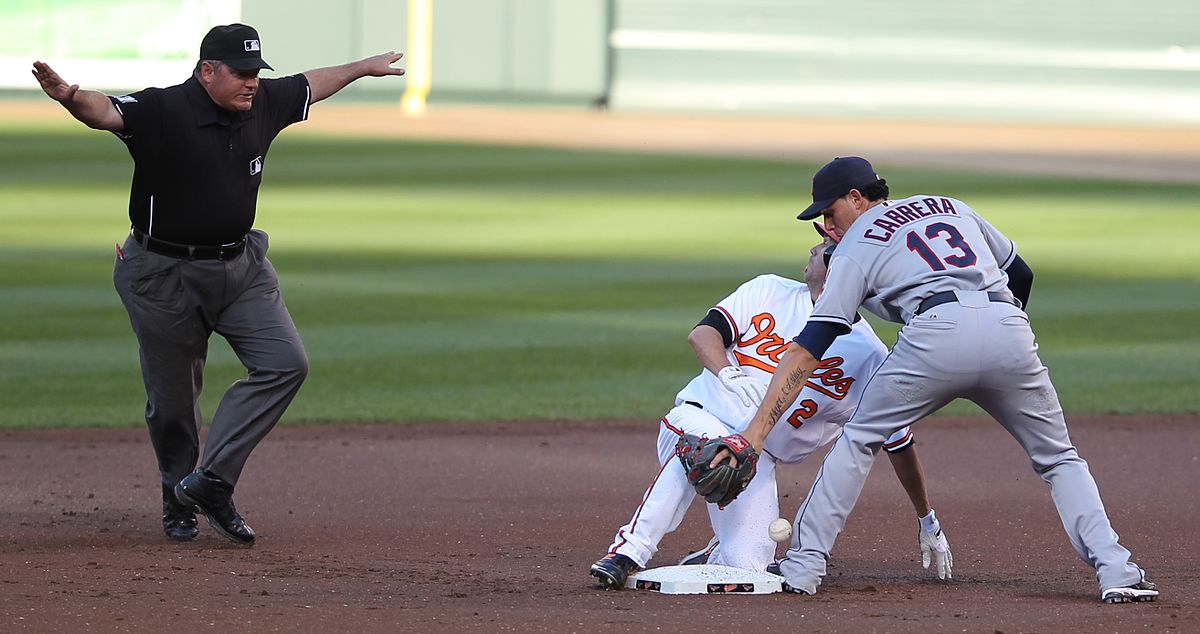A save in baseball is a specific stat for relief pitchers. It shows how they preserve their team’s lead.
Baseball has many stats, each highlighting a player’s contributions. One such stat is the save, which is crucial for pitchers. A save reflects a pitcher’s skill in maintaining the lead during the game’s final innings. It’s not just about throwing strikes; it’s about handling pressure and securing victory.
Understanding what a save is helps fans appreciate the strategy behind using relief pitchers. Whether you’re new to baseball or a seasoned fan, learning about saves can deepen your knowledge of the game. Let’s explore what makes a save important and how it impacts the outcome of a match.

Credit: theanalyst.com
Introduction To Saves
The concept of a save is vital in baseball. It highlights the skill of a pitcher who preserves the lead in the final innings. This role is crucial and often celebrated by fans and players alike.
Understanding what a save is can enhance your appreciation of the game. Let’s dive deeper into the definition and importance of saves in baseball.
Definition
A save is awarded to a relief pitcher who finishes a game. The pitcher must preserve the team’s lead. To earn a save, the pitcher must meet specific criteria. First, they must enter the game with a lead of three runs or less. Second, they must pitch for at least one inning. Third, they must preserve the lead and finish the game.
There are other situations where a save can be awarded. For example, if the pitcher enters with the tying run on base, at bat, or on deck. The pitcher must also record the final out to earn a save.
Importance In The Game
Saves are critical in baseball. They often determine the outcome of close games. A pitcher who consistently earns saves is highly valued. This role requires nerves of steel and precise pitching.
Teams rely on their closers to secure victories. This trust is built over time and through consistent performance. A reliable closer can boost a team’s confidence and morale.
In summary, saves are a key part of baseball strategy. They highlight the importance of a strong bullpen. Understanding saves can deepen your appreciation for the game.
History Of Saves
The ‘save’ is a crucial statistic in baseball. It recognizes a relief pitcher’s role in securing a team’s win. Understanding its history helps appreciate its value today.
Origin
The concept of a save emerged in the 1950s. Jerome Holtzman, a sportswriter, introduced it. He wanted to highlight relief pitchers’ contributions. Before this, their efforts went unnoticed. The official adoption came in 1969. Major League Baseball (MLB) recognized its importance. This new stat changed how pitchers were evaluated.
Evolution
The save rule has evolved since its inception. Initially, the criteria were simple. A pitcher earned a save if he finished a win. Over time, the rules became more specific. MLB refined the criteria in 1975. Now, a save requires meeting certain conditions. The pitcher must maintain a lead. He cannot be the winning pitcher. He must pitch effectively for at least one inning. These changes made the stat more meaningful. It ensured only deserving pitchers got credit.
Criteria For A Save
In baseball, a save is a crucial statistic for relief pitchers. It measures the ability to maintain a lead and secure a win. To earn a save, a pitcher must meet specific criteria set by the official rules. Let’s dive into these rules and the situations where a save can occur.
Official Rules
To earn a save, the pitcher must finish the game. The pitcher cannot be the winning pitcher. They must also meet one of three conditions. First, the pitcher enters the game with a lead of three runs or less. They must pitch at least one inning. Second, the pitcher enters the game with the tying run either on base, at bat, or on deck. Third, the pitcher pitches at least three innings.
Situations For A Save
Several situations can lead to a save. A common scenario is a team leading by three runs. The closer enters in the ninth inning. Another situation is a team with a small lead and the opponent threatening to score. The tying run could be on base or at bat. Lastly, a pitcher can earn a save by pitching three or more innings. This often happens when a starter exits early. The reliever then maintains the lead for the rest of the game.
Understanding the criteria for a save helps appreciate the strategy behind relief pitching. It highlights the pressure and skill needed to secure a win.
Role Of The Closer
The closer in baseball plays a crucial role. They are responsible for securing the win in the final innings. Their presence can make or break the game. Let’s explore their responsibilities and the skills required to excel in this role.
Responsibilities
The closer has several key responsibilities:
- Enter the game in the last innings.
- Face the toughest batters.
- Maintain the lead and secure the win.
- Handle high-pressure situations.
Closers often enter the game with runners on base. They must prevent those runners from scoring. Their job is to get the final outs and protect the team’s lead.
Skills Required
Closers need a unique set of skills:
- Pitching Precision: Accurate throws are essential.
- High Velocity: Fast pitches can overpower batters.
- Mental Toughness: They must handle pressure well.
- Stamina: They must perform at peak in short bursts.
Additionally, a good closer has a strong understanding of batters’ weaknesses. They use this knowledge to their advantage.
Here’s a brief table summarizing the key skills:
| Skill | Importance |
|---|---|
| Pitching Precision | High |
| High Velocity | High |
| Mental Toughness | Very High |
| Stamina | Moderate |
The closer’s role is vital for the team’s success. Their ability to perform under pressure can be the difference between a win and a loss.
Impact On Team Strategy
The concept of a save in baseball plays a crucial role in shaping team strategy. Managers often rely on their closers to secure victories, influencing decisions throughout the game.
Game Planning
Game planning takes into account the potential for a save situation. Coaches plan their pitching rotation with the closer in mind. The strategy ensures the best pitcher handles the most critical moments. Teams often save their best reliever for late innings. This approach aims to preserve a lead and secure the win.
Bullpen Management
Bullpen management becomes essential as the game progresses. Managers must decide when to bring in the closer. They must also consider the closer’s availability and recent workload. Proper management helps prevent overuse and injury. It also ensures the closer is fresh for key situations. This careful planning helps maintain the team’s chances of winning close games.

Credit: en.wikipedia.org
Notable Save Records
In baseball, a save is a statistic that credits a relief pitcher for finishing a game for the winning team under certain conditions. Notable save records highlight the achievements of pitchers who excelled in this crucial role. These records show the skill and consistency needed to close out games successfully. Let’s explore some of the most impressive save records in baseball history.
Career Leaders
Career save leaders stand out for their longevity and performance. Mariano Rivera holds the record with 652 saves. Trevor Hoffman follows with 601 saves. Lee Smith ranks third with 478 saves. These pitchers delivered under pressure for many years. Their consistency and skill earned them a place in baseball history.
Single-season Records
Single-season save records highlight peak performance. Francisco Rodríguez holds the record with 62 saves in 2008. Bobby Thigpen set the previous record with 57 saves in 1990. Éric Gagné, John Smoltz, and Randy Myers each recorded 55 saves in a season. These pitchers showcased their talent during remarkable seasons. Their achievements remain benchmarks for future closers.
Controversies And Debates
In baseball, the concept of a “save” has sparked many discussions. While it aims to recognize pitchers who secure a win, the stat has its critics. Some argue it doesn’t capture the whole picture of a pitcher’s skill or contribution.
Criticism Of The Stat
Many believe the save stat is too narrow. It only counts certain situations, missing the full impact of a pitcher’s performance. Critics say it rewards pitchers for easy saves. They think it ignores tougher, high-pressure situations that may not meet the save criteria.
Another point of criticism is the save stat’s influence on game strategy. Managers might make decisions based on achieving a save. This can lead to less optimal choices for the team’s overall success. The save stat can also inflate a pitcher’s value. This may lead to misconceptions about their true effectiveness and skill.
Alternative Metrics
To address these issues, some suggest alternative metrics. One such metric is the “hold.” This stat recognizes pitchers who maintain a lead, even if they don’t finish the game. It aims to give credit to middle relievers, who often play crucial roles.
Another alternative is the “shutdown” and “meltdown” metrics. These stats assess a pitcher’s performance in high-leverage situations. A shutdown means the pitcher helped the team, while a meltdown indicates they hurt the team’s chances. These metrics provide a more detailed view of a pitcher’s impact on the game.
Wins Above Replacement (WAR) is also gaining attention. It measures a player’s overall contribution compared to a replacement-level player. WAR includes pitching, hitting, and fielding, offering a more comprehensive evaluation.

Credit: www.wsj.com
Frequently Asked Questions
What Is Considered A Save In Baseball?
A save occurs when a relief pitcher finishes a game for a winning team under specific conditions. These include entering with a lead of three runs or less, or pitching at least three innings.
How Does A Pitcher Earn A Save?
A pitcher earns a save by successfully closing out a game. They must meet certain criteria, such as preserving a small lead or pitching multiple effective innings.
What Are The Criteria For A Save?
The criteria for a save include entering with a lead of three runs or fewer or pitching three or more innings. The pitcher must also maintain the lead until the end of the game.
Can A Starting Pitcher Get A Save?
No, a starting pitcher cannot get a save. Saves are awarded only to relief pitchers who enter the game in specific situations and successfully close it out.
Conclusion
Understanding what a save is in baseball enriches your game knowledge. Saves highlight crucial moments and skilled pitchers. This term adds depth to your baseball experience. Next time you watch a game, notice these key plays. They are exciting and important.
So, keep enjoying and learning about baseball. It brings fans together. Happy watching!





